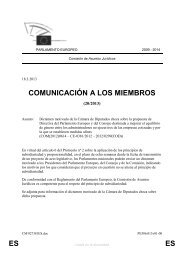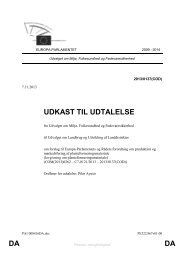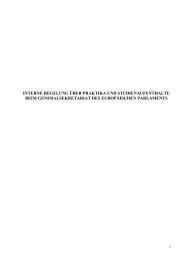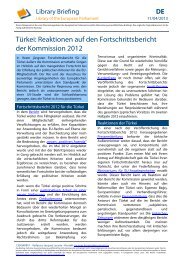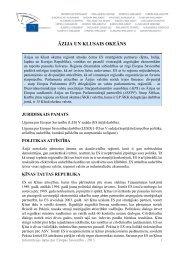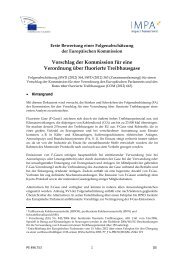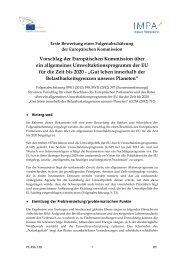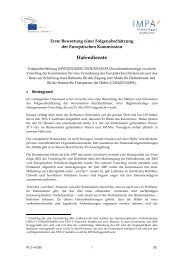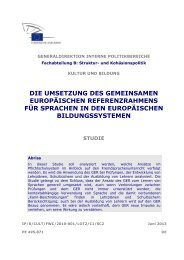Link to the study - European Parliament - Europa
Link to the study - European Parliament - Europa
Link to the study - European Parliament - Europa
Create successful ePaper yourself
Turn your PDF publications into a flip-book with our unique Google optimized e-Paper software.
Policy Department D: Budgetary Affairs<br />
____________________________________________________________________________________________<br />
The effect that usually non-radioactive materials become radioactive by neutron-capturing is called<br />
activation. Activated materials are not only radioactive on <strong>the</strong>ir surfaces but <strong>the</strong> whole material that<br />
was exposed <strong>to</strong> <strong>the</strong> neutron flux is more or less homogenously radioactive.<br />
Figure 7 illustrates that activation process for cobalt in steel as an example for <strong>the</strong> many o<strong>the</strong>r<br />
activation processes.<br />
Figure 7: Example: <strong>the</strong> activation of cobalt in steel and subsequent decay of activated cobalt<br />
Source: Authors<br />
A second mechanism that spreads radioactivity <strong>to</strong> non-radioactive materials in a nuclear reac<strong>to</strong>r is a<br />
contamination process.<br />
During reac<strong>to</strong>r operation certain fission products such as cesium can leave <strong>the</strong> fuel rods <strong>to</strong> a certain<br />
extent (e.g. in a gaseous form through micro fissures in <strong>the</strong> metal enclosure called cladding, during<br />
cladding failure events), dissolve in <strong>the</strong> cooling liquid and are removed by filtering and ionexchangers.<br />
Irradiated metal surfaces corrode or are mechanically abrased. Both types, fission<br />
products as well as abrased activated particles from surfaces ei<strong>the</strong>r dissolve or are suspended in <strong>the</strong><br />
cooling liquid and are also removed by filters.<br />
As a result <strong>the</strong> liquid transferring <strong>the</strong> heat (normally <strong>the</strong> cooling water) is contaminated with<br />
dissolved radioactive ions and activated particles. All surfaces with which such contaminated cooling<br />
water gets in contact (pipes, valves, heat exchangers, etc.) can adsorb dissolved and suspended<br />
contamination on <strong>the</strong>ir surface and so <strong>the</strong>mselves become more and more contaminated. Normally<br />
<strong>the</strong> contamination remains on <strong>the</strong> surface or in <strong>the</strong> outer oxide layer. A deeper penetration can only<br />
take place in materials with a rough surface (e.g. concrete) or when <strong>the</strong> base material has surface<br />
defects (e.g. on metal surface with scratches).<br />
Figure 8 illustrates that as a simplified example.<br />
38




